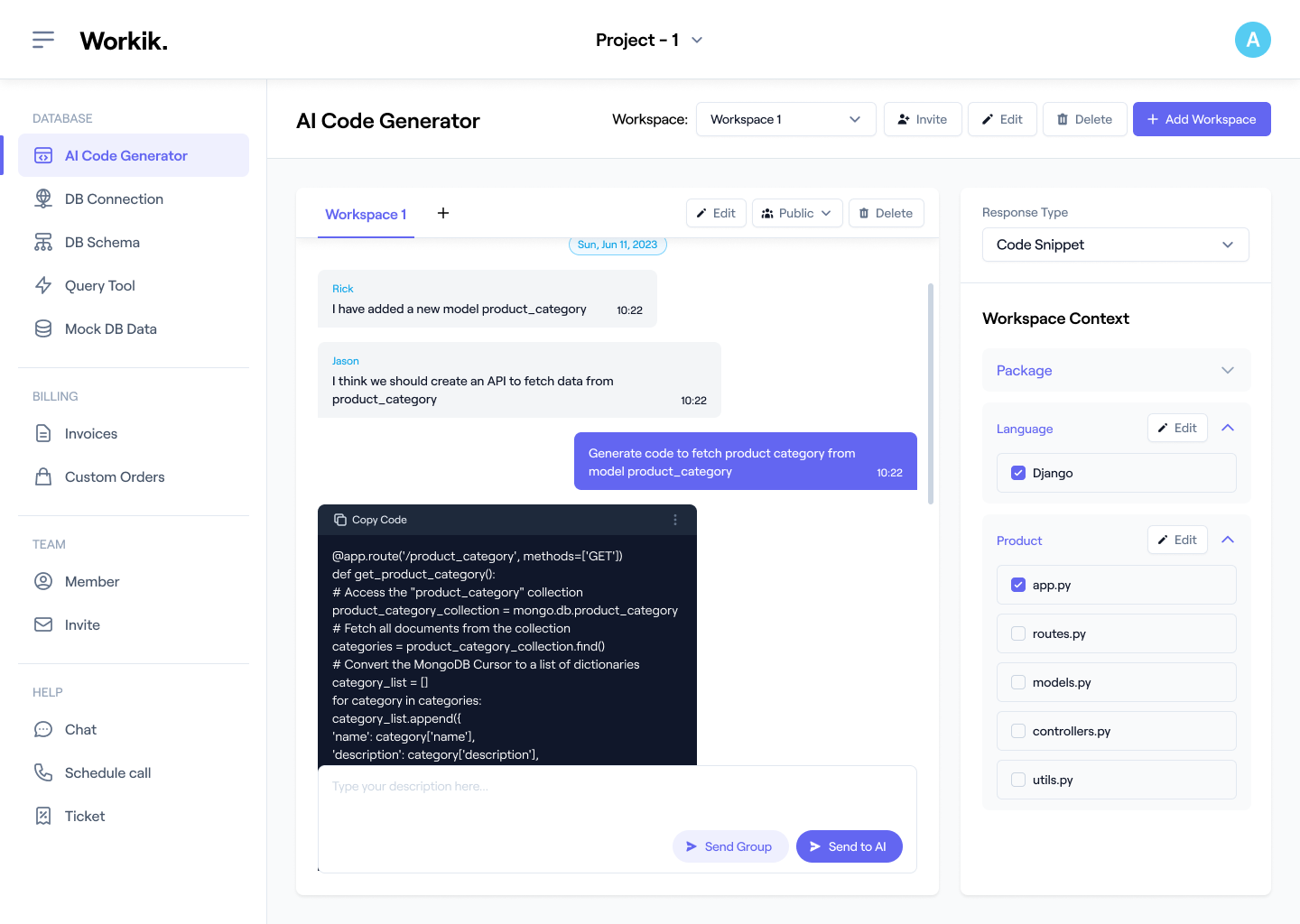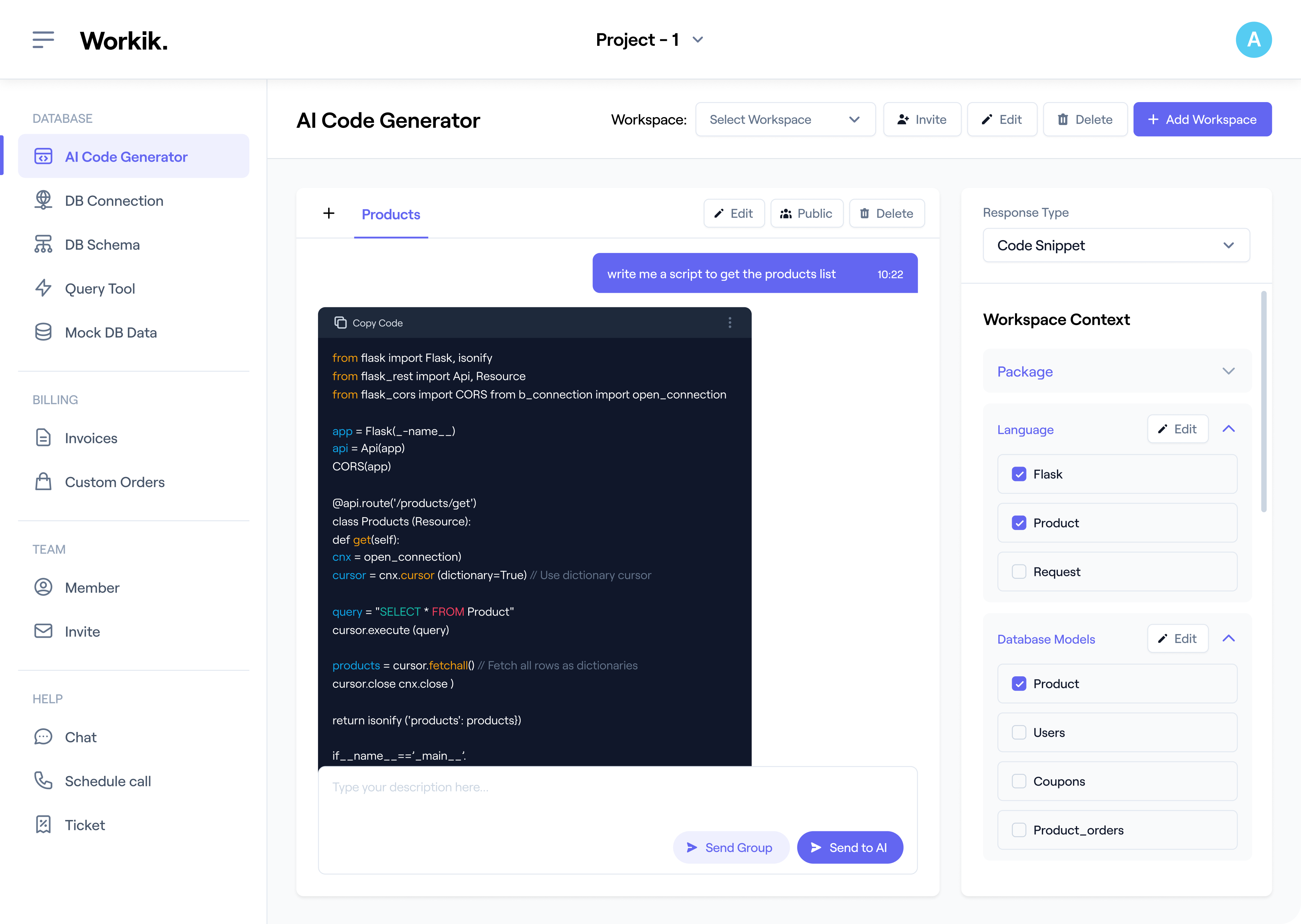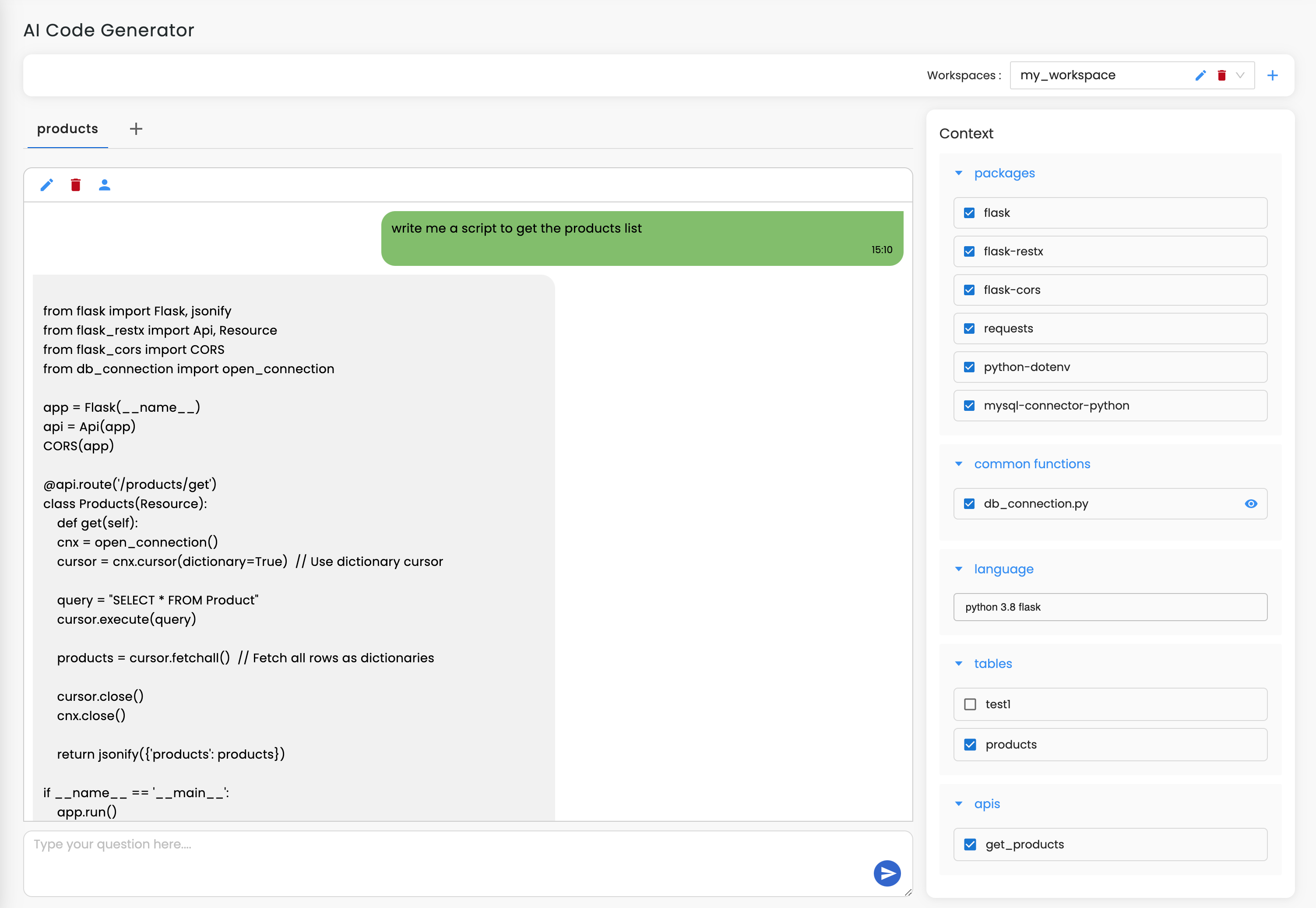
Join our community to see how developers are using Workik AI everyday.
Features

Instant Game Logic Creation
AI helps build structured scripts for character interactions, events, and more by analyzing Blueprint and C++ structures.

Optimize Gameplay Flow
AI enhances gameplay by offering detailed suggestions for character movement, AI behavior, and collision detection.

Smart Asset Import
Integrate 3D assets from Blender or Substance Painter with AI adjusting for materials, lighting, and physics.

Accelerate Debugging
AI can identify and correct syntax errors, optimize logic flow, detect unused variables in C++ and Blueprints.
How it works
Sign up on Workik with your Google account or manually enter your details.
Connect your GitHub, GitLab, or Bitbucket. Define modules such as character controls, or environment assets. Specify customization needs like animation styles, rendering, and AI-driven enhancements.
Leverage AI to generate optimized game scripts, create procedural level designs, and adjust lighting and shading. Get debugging insights, automate performance tests, and documentation for Blueprints and C++ code.
Collaborate with your team to finalize code and assets in real-time. Seamlessly deploy and iterate builds to create a high-performance game ready for launch.


Expand
.png)
.png)
Expand


Expand


Expand


Expand


Expand


Expand


TESTIMONIALS
Real Stories, Real Results with Workik
Workik’s AI boosts our Unreal Engine workflow by automating Blueprints and debugging C++.

James Clark
Lead Game Developer
The AI helped simplify Unreal Engine tasks like asset imports and level scripting, letting me design faster.

Kayla Murphy
Junior Game Designer
AI assisted in asset optimization and lighting tweaks made Unreal Engine scenes flawless, from textures to final build!

Carlos Ramirez
Technical Artist
What are the popular use cases of Workik's AI for Unreal Engine code generation?


Some popular use cases of Workik's AI-powered Unreal Engine code generation for developers include but are not limited to:
* Generate custom Blueprints and C++ scripts for complex game mechanics in seconds.
* Build code for character controls, interactive environments, and physics-based animations.
* Sync data seamlessly between Unreal Engine and external platforms.
* Set up integrations with Unreal Engine’s API and custom plugins.
* Streamline asset imports, level design, and scene optimization with AI-driven workflows.
* Generate documentation to simplify Unreal Engine project setup and customization.
What kind of context can I add in Workik AI related to Unreal Engine code generation?


Setting context in Workik is optional but helps personalize the AI responses for your Unreal Engine projects. Here are the types of context you can add:
* Programming language (e.g., C++, Python)
* Integrate codebase files from GitHub, GitLab, or Bitbucket.
* Mention libraries or plugins (e.g., OpenCV, PhysX)
* Add your preferred frameworks (e.g., TensorFlow)
* Integrate API blueprints using Swagger or Postman to integrate with external services.
How does Workik’s AI help with Unreal Engine optimization tasks?


Workik’s AI can analyze performance bottlenecks in real time, offering code adjustments to improve frame rates and memory usage. For example, it can optimize lighting calculations, reduce unnecessary physics calls, and refine rendering processes.
Can Workik AI assist with procedural generation in Unreal Engine?


Yes! Workik’s AI can generate procedural scripts for elements like landscapes, terrains, and even AI pathfinding. With procedural generation, you can create dynamic, expansive worlds without manually designing each detail, ideal for open-world games or randomized level design.
How does Workik’s AI streamline Unreal Engine multiplayer setup?


Workik AI can help generate code for multiplayer components, including player synchronization, server-client communication, and session management. For instance, AI can assist with setting up network replication for real-time gameplay, helping developers easily implement features like player matching, in-game chat, and score tracking.
Can I use Workik’s AI to create custom tools within Unreal Engine?


Absolutely. Workik’s AI can help you build custom editor tools to streamline your workflow, like asset management tools or environment generators within Unreal’s editor. By automating repetitive tasks, these tools speed up your development process, enabling you to focus more on creative game design.
How does Workik AI handle Unreal Engine asset optimization?


Workik’s AI can optimize large asset files by adjusting texture resolutions, mesh complexity, and LODs (Levels of Detail). This is especially useful for mobile or VR platforms where performance is key. For example, it can compress high-res textures for faster load times without sacrificing visual quality.
Generate Code For Free

Unreal Engine: Question And Answer
Unreal Engine is a powerful 3D creation platform used for game development, virtual production, and immersive experiences. Known for its high-performance capabilities, it allows developers to create interactive environments, realistic animations, and complex visual effects. It supports both Blueprint visual scripting and C++ for customized game mechanics, making it ideal for projects across gaming, architecture, and film.
Popular frameworks and libraries used in Unreal Engine development include:
3D Modeling and Animation:
Blender, Autodesk Maya
Physics and Collision:
NVIDIA PhysX, Chaos Physics
AI and Pathfinding:
Recast, Behavior Trees
Rendering and Graphics:
DirectX, Vulkan, OpenGL
Networking:
Unreal’s Replication system, RakNet
Performance Optimization:
NVIDIA Nsight, RenderDoc
Popular use cases of Unreal Engine include:
Game Development:
Create immersive games with detailed environments and complex interactions.
Virtual Production:
Use Unreal Engine’s real-time rendering for film production and live shoots.
Architectural Visualization:
Build interactive 3D models and walkthroughs for architectural projects.
Simulation and Training:
Develop simulations for industries like automotive, healthcare, and military training.
VR and AR Experiences:
Design virtual and augmented reality experiences for various applications.
Career opportunities and technical roles available for professionals in Unreal Engine include Game Developer, Technical Artist, Virtual Production Specialist, Level Designer, Environment Artist, AI Programmer, Unreal Engine Consultant, Simulation Developer, and VR/AR Experience Designer.
Workik AI supports a range of Unreal Engine development tasks, including:
Blueprint Generation:
Create Blueprints for complex character interactions, animations, and events.
Procedural Content Creation:
Generate scripts for dynamic terrain, AI pathfinding, and randomized level designs.
API Integrations:
Connect Unreal Engine with external tools, such as CRM systems or analytics platforms.
Performance Optimization:
Refactor C++ code, optimize rendering processes, and improve frame rates.
Testing:
Set up automated tests for gameplay and network latency.
Debugging:
Use AI to identify and resolve issues in Blueprints or C++ code.
Explore more on Workik
Get in touch
Don't miss any updates of our product.
© Workik Inc. 2025 All rights reserved.

